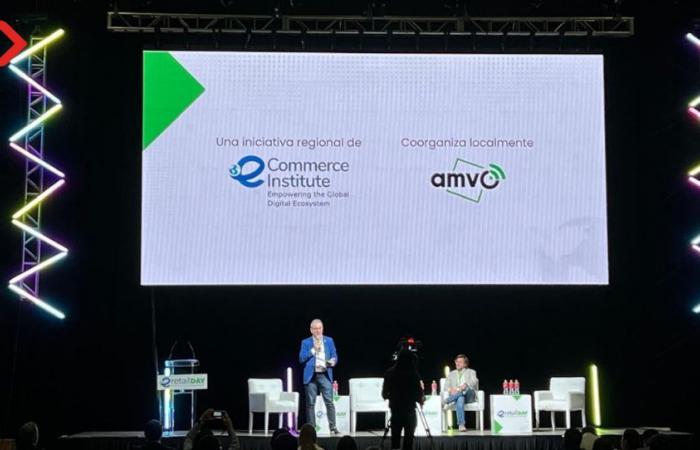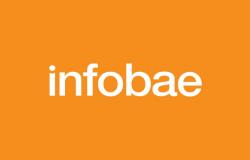During eRetail Day Latam, Retail & Digital Channels Revolution we spoke with the presidents of VTEX and emBlue about ecommerce.
Last Tuesday, June 11, the in-person activities of the eRetail Day Latam, Retail & Digital Channels Revolution. With the WTC As headquarters, talks and panels were held in which the importance of digital commerce in Latin America was highlighted. For example, Mexico generated 658.3 billion pesos in this sector, which puts it ahead in ecommerceabove Malaysia and the Philippines.
This already represents 6% of the Gross Domestic Product (GDP) of the country and for business, the retail It is 13.5% of their business. With this data to contextualize the importance of digital commerce, we find Marcos PueyrredonCo-Founder & Global Executive SVP of VTEX and President of eCommerce Institute and with Camilo RodriguezChief Marketing Officer (CMO) at emBlue.
Marcos Pueyrredon speaks about ecommerce in Mexico
During the eRetail Day Latam We had the opportunity to talk again with Marcos PueyrredonCo-Founder & Global Executive SVP of VTEX and President of eCommerce Institute.
This video may interest you
What is the opportunity that Mexico has to grow in digital commerce, facing a phenomenon as important as Nearshoring?
Mexico, along with Brazil, Colombia, Argentina, Chile, are the mature ecosystems of Latin America that are already on an almost equal footing with North America, with Canada, with the United States and with any country in Europe. Mainly because today we have double-digit penetration rates of digital channels over traditional business.
The pandemic brought us a hyper, if you want, digitization, a change in consumer habits, and that has brought a very strong development of the ecosystem. And it also made us stop depending so much on Asia as a large factory, and Mexico is transformed into a large factory, that model of B2B, direct consumer, and the possibility that Mexico begins to supply American consumers, it already has the ecosystem prepared to be able to do so. So, it is an opportunity where cross-border or global sailing becomes a must, because today any company, any entrepreneur in Mexico can and has the resources and capabilities to be able to sell to any client in the United States.
Furthermore, the Latino community will soon be the first minority in the United States. That is very strong, because it has a much stronger economic power, socioeconomic level and level of digitalization than when those diasporas of foreigners were in their countries of origin. Because they have blended in with all the services and opportunities they have in the United States. So, they are more friendly and need and want to be close to what is theirs.
There are opportunities for producers who have products, everything that is products for the buyer persona, of Mexicans, there is a very great opportunity to be able to provide them with the same experiences and products and services that they have in Mexico, but in the United States.
What are the aspects of e-commerce in which Mexico should accelerate?
Go back to the origins, the go to basic. Now we have to go do the minimalism of the digital commerce. Do little and very well. Because? Because we have volume. So, what has been done is that very complex issues have to be resolved in a simple way. Deliver the product in a timely manner.
It seems silly, but it means delivering the product in a timely manner.
And fulfilling the promise, that positive experience, is when you have volume, it is one thing to deliver ten products and another thing to deliver a thousand products per day. Today we are in that happy problem, if we want. So, for that you have to do little and very well. The pillars and keys of digital commerce They are claimed, which are mainly everything that is the four pillars and the four keys of digital commerce. The four pillars are platform and technology, operation and logistics, unified marketing and customer service.
Sell, not only through my direct channels, but through my indirect channels. And there begins collaborative commerce, unified commerce, conversational commerce. Everything that has allowed us to humanize this entire purchasing process through digital channels. Finally, the most important key, which is a positive purchasing experience. One, if you want to be profitable and sustainable, you have to deliver on the promise. And basically it is achieving the same level of satisfaction, or better than through traditional channels.
Where can small businesses start to implement AI in the retail sector?
Well, basically we have a program within the E-commerce Institute that is practical implementation of artificial intelligence in the value chain to the final consumer. Only in six classes, in a month and a half of crusade, one ends up identifying what, how, when and how that application of artificial intelligence generates impact. Because today the great challenge is healing. Today you have many tools, we are bombarded, but how do you get value from them, how do you make that use of artificial intelligence have an impact.
So here you return to go to the basics, to minimalism. First you have to copy intelligently. In other words, today you have many companies that are already showing you where and how. And there are, if you want, good practices on how to implement it with Quick Wings, which are baby steps, which is to start using it. For me the most important thing is to start using it and apply it to something specific. Customer service, cataloging, route optimization, stock prioritization, creation of promotions. So you have many things that are simple to use, but have a high impact.
You have to go on that path of healing, and that is why these events and retail days are good, where you see in practice how others are using it. Then copy intelligently, as Peter Drucker did, adding value. Benchmarking and seeing how retailers and brands are using it in practice.
eRetail Day Latam: the most notable data for ecommerce
“Mexico is wasting data”: Camilo Rodríguez from emBlue
Could you tell us about Emblue and its value proposition in the digital marketing market?
emBlue is the platform Customer Engagement leader in Latin America. Our value proposition focuses on three important points. The first and most important is the data. We want to have all the data of the companies within Emplu. That’s why we talk about a Omnichannel CRM. So that? So that this information and this data.
I always say that data information is alive. According to the different sources of information, we can bring them into emBlue to be able to track that information and the change in user behavior within emBlue. That is the first point. The first point gives you the second point. The second point is what do you do with all this information. Customers have rich information in many ways, either customers or companies. There is a big part there. We are going to do all this by automating it. What do we automate? Communication channels.
What channel is it? Email marketing. SMS, WhatsApp, NPS surveys in Promoters Core. We do push notification. And the third is that this is where we are omnichannel and basically be omnichannel that reaches the person at the right time, through the right channel and the right content. These three are our value proposition for the market.
Can any company approach Blue to put their data in your hands?
Yes, look, this is a good question and I want to make it clear that emBlue is a company that offers a solution. We help other companies create long-term relationships that are interdisciplinary. We are industry agnostic.
We work with companies from banking, government, fintech. We work with large retailers in Latin America, Airlines because the same thing, the need for digital communication is transversal to any company and that is why we can help any type of company in communications.
What are the most relevant trends in digital marketing that emBlue has in its sights?
One important thing is the data. Many of us have told you about the information blocking that you have had with the cookies that are gone. But basically it is being able to take advantage of the underutilization of company data. And this is Fierce Party Data.
In emBlue is very focused on Fierce Party Data. That is why our first pillar is information. And there are many opportunities for improvement according to the information for digital companies. And we are tending to work a lot on data and also on the incorporation of artificial intelligence. They are on trend.
Is there any adjustment that you have made to emBlue upon arrival in Mexico according to the Mexican market?
The Mexican market has an American influence. It is the Latin American market that can have the most American influence. But there is a slight delay with the management of information and data. So we have done a lot of focus and that is a little on the people who are in this interview listening to it or who are going to transcribe. You are called to get more out of data. The data is underutilized. Exactly that, it is an adaptation and an emphasis that we are giving in Mexico.
You said that we are behind in Mexico, what is the first step that companies can take to properly use their data?
Look, there is an interesting term that is data driving but basically it is starting one, being aware of the management of data information and getting more out of it. And second, start being able to use and have platforms that help manage and automate all these types of communications.
That’s kind of the call, right? It has made great progress, Mexico is going to have greater progress because of the relationship right now with the market that the United States is going to have much more interference in Mexico. So, it is on the right track and that is why we are committed to the Mexican market.
How does emBlue and the Mexican market interfere with artificial intelligence in this sector specifically?
Look, artificial intelligence is super relevant. There are types of artificial intelligence. The important thing about artificial intelligence is that you have to adopt it now, you have to start using it now. But progressively, that’s one. The companies, that is not going to take away so many jobs. They must be adopted within the labor productive factors.
But artificial intelligence undoubtedly also has to do with information. And that’s it, right? You have to start using it. The platforms are incorporating them like ours. We already have predictive segmentation models and that is where the challenge for companies lies. Of course.
Do you think that Mexican companies specifically are prepared for this challenge that you point out?
Yes, more and more. There has been a broader education to be able to train and they are a little more prone, but that is the call. A little more to participate in webinars, in events related to digital marketing, which is very important.
Are there any other digital tools you are exploring at emBlue to enhance the solutions you offer?
Look, we offer, we are generating and we are starting to make a tool that adds much more to it. They are WhatsApp chatbots, internal and outgoing, email and something to be able to offer a more customer-centric solution to the companies we have. But we are incorporating them, we already have them, but we are basically moving forward.
Follow us on Google News to stay informed






